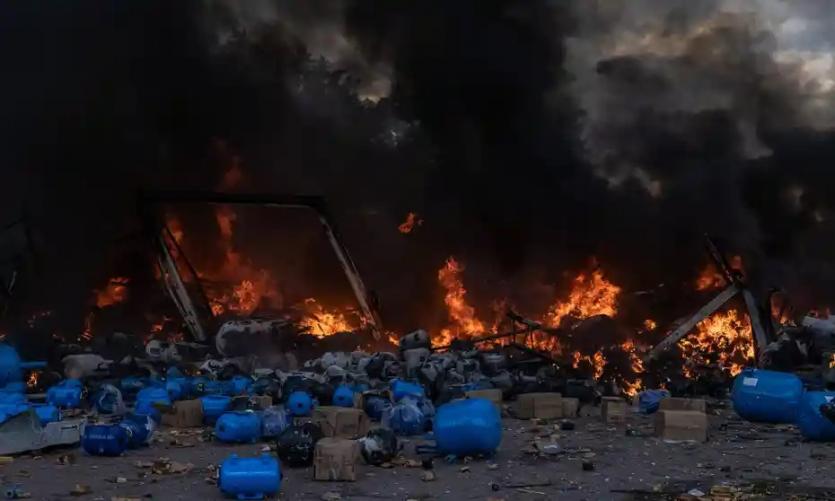A fire at a warehouse after a Russian Kalibr missile was shot down over Kalynivka village in Ukraine on 8 March. Photo: EPA
By Patryk Krych | The World Daily | MAY 16th 2022
With bombings and killings occurring all over Ukraine as its defensive war against Russia carries on, many have concerned themselves with surviving the conflict. For some, however, this has brought up a question – what will the country look like, if and when the invaders are finally driven back? Just how green and liveable will a country ravaged by war manage to remain?
Last week, United States presidential envoy John Kerry warned that the longer Putin’s war carries on in Ukraine, the worse the consequences will be not only for the country’s own environment, for the world’s climate.
“If it’s a long period of time, obviously that makes [staying within 1.5C] very complicated,” said Kerry. “It depends on what happens with the war, where the war goes and how long it lasts. If miraculously we can somehow find a way to resolve some of the fundamental problems in the next six months, then maybe we could just accelerate everything together. I think we can make up some distance [in progress on tackling the climate crisis].”
He added that the agreements that had been set down during the UN Cop26 climate summit last year would have had some serious troubles in establishing their goals if they were occurring through the current circumstances, but that not all hope is lost yet – as there is still a chance of those goals being met.
“The longer this goes on, the harder it becomes [to stay within 1.5C]. There are a number of scientists who believe we are on the edge of 1.5C now. Anything that is not part of the acceleration [of emissions-cutting efforts] gets in the way,” he said.






